WORLD TRAVEL NEWS ARTICLE
UKRAINE
Lena looked stunning: neat black pencil skirt, simple white blouse, shining black hair pulled back off her pretty face. She looked as if she had come straight from a fashion shoot rather than the office. It was the same next day when she appeared in casual but chic T-shirt and immaculate jeans. They may not be the highest wage earners but the young people of Kiev (boys and girls) know how to look good.
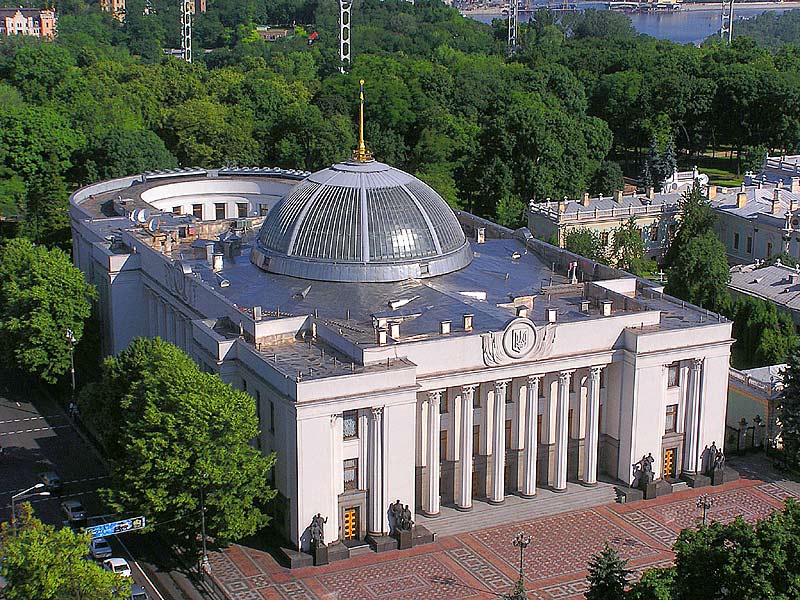
Verkhovna Rada - Ukraine Parliament Building
Maybe they are taking inspiration from their city, for Kiev the capital of Ukraine, has shaken off the down-at-heel, dowdy image of the old Soviet regime and is rising phoenix-like from its ashes. Smart shops line Khreshchatyk, Kiev’s main thoroughfare, and behind the heavy doors of its Central Department Store lies an Aladdin’s cave of consumer delights that includes glittering jewellery, both costume and real, world-famous perfumeries, fine porcelain and glassware to say nothing of trendy fashions. One hundred yards or so away one of several underground shopping malls entices shopaholics.
Uneven pavements that once were traps for unwary pedestrians are being relaid, roads resurfaced, and crumbling buildings restored to their former glory. On the days that Lena was at her office desk it was left to her cousin, my friend Irene, to show me round this fascinating city that has rushed headlong into the 21st century. Yet, beneath the skin of modern-day consumerism lie, onion-like, layer upon layer of history and tradition, dating back to at least the 5th century.
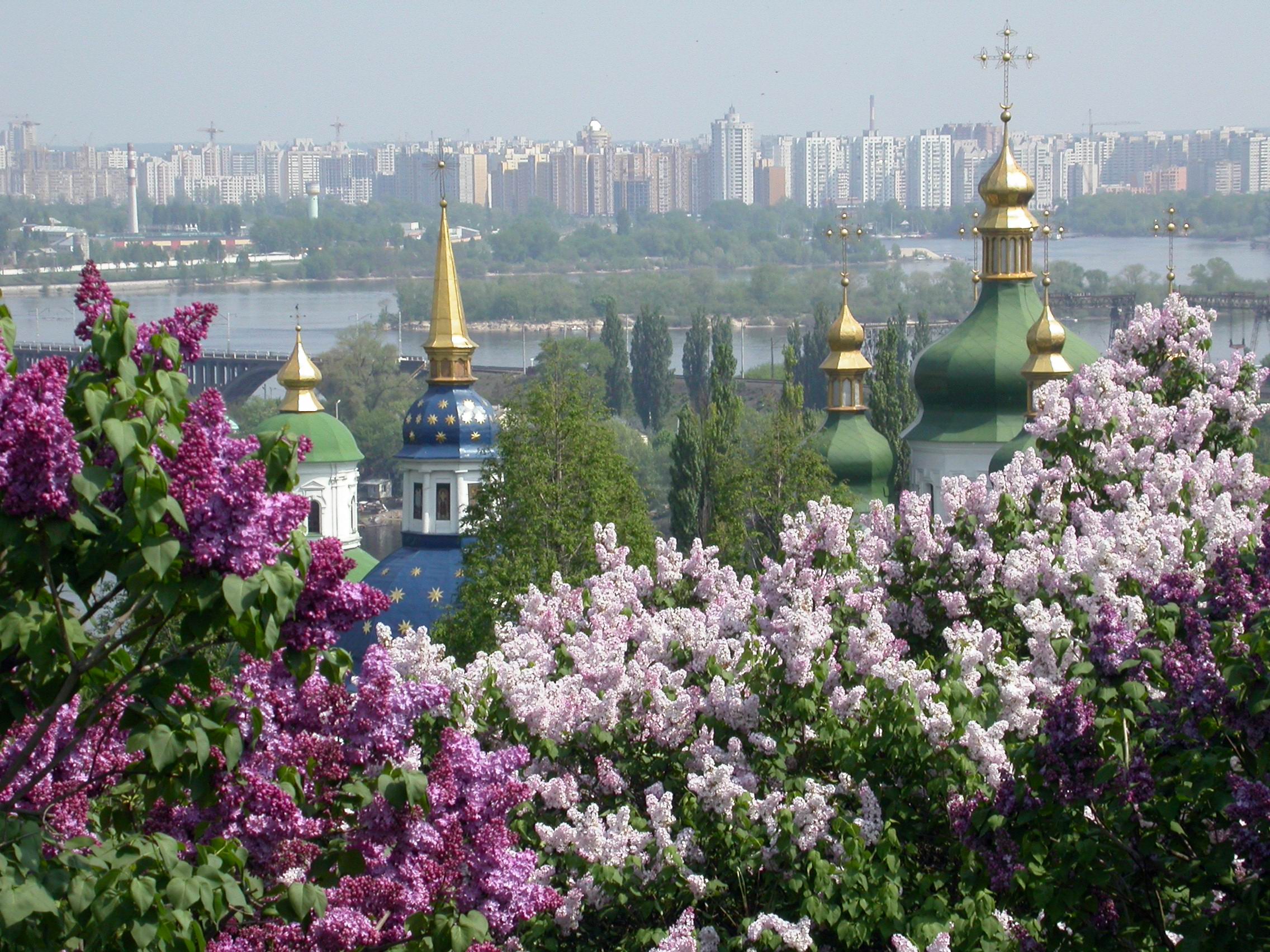
Spires and City of Kiev
Kiev, like Rome, is built on seven hills on the banks of one of Europe’s longest rivers, the Dnieper, some 590 miles from the sea. It is not known as the garden-city for nothing, for apart from lots of small public gardens there are a number of magnificent parks and in summer its streets are shaded by the city’s iconic horse chestnut trees.
Whilst there are hotels aplenty to suit all budgets Irene and I had opted for an apartment wonderfully located on a quiet street halfway between the bustle of Khreshchatyk and the more sedate Volodmyrska St with its Opera House, intriguing replica of the Golden Gate and Kiev University. Also on Volodmyrska stands the cathedral of St Sophia dating back to the 11th century. Whilst originally quite small, over the intervening centuries it has grown considerably and has now gained the status of a UNESCO World Heritage site. Not far away is St Michael’s cathedral destroyed by the Soviets in 1934 but recently rebuilt to its original 12th century glory.
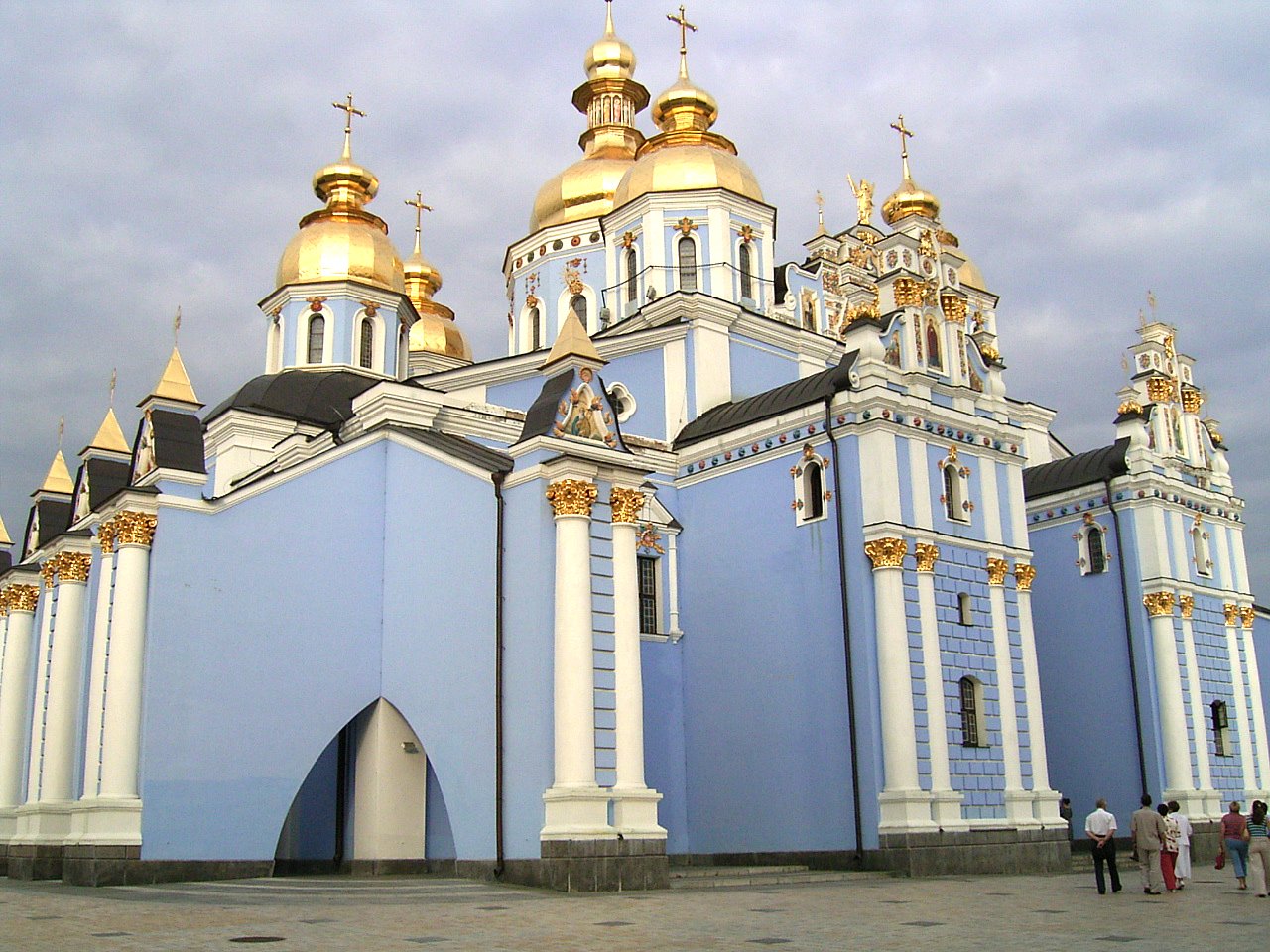
Saint Michael Cathedral - Kiev
Ukraine gained independence from the Soviet Union in 1991 an event commemorated by Independence Square, which divides Khreschatyk into two sections. The bustling square, looked down on by the statue to independence (a girl holding aloft a gilded spray of a guelder-rose, the symbol of Ukraine), is also where the Orange Revolution of 2004 took place when many thousands gathered together to demand democracy and where President Viktor Yuschenko was inaugurated. Khreschatyk, filled with traffic during the week, takes on a quite different character at weekends when it becomes a thronged pedestrian precinct. The other end of the one kilometre street is the Bessaraba market, where beneath one roof colourful stalls groaned under the weight of cheeses, meat, fish, flowers, fruit (fresh and dried) and vegetables. A foody’s idea of heaven.
There were few shops in the Lypky district but what it lacked in shops it made up for with architecture. Every building Irene and I stopped in front of seemed more elaborate or stylish than the one we had just passed. Most memorable in my eyes were the House of the Weeping Widow adorned with a woman’s face, it is said that in the rain it looks as if she is shedding tears; and the Building of the Chimeras decorated with fanciful elephants, frogs, dolphins, rhinos and mermaids.
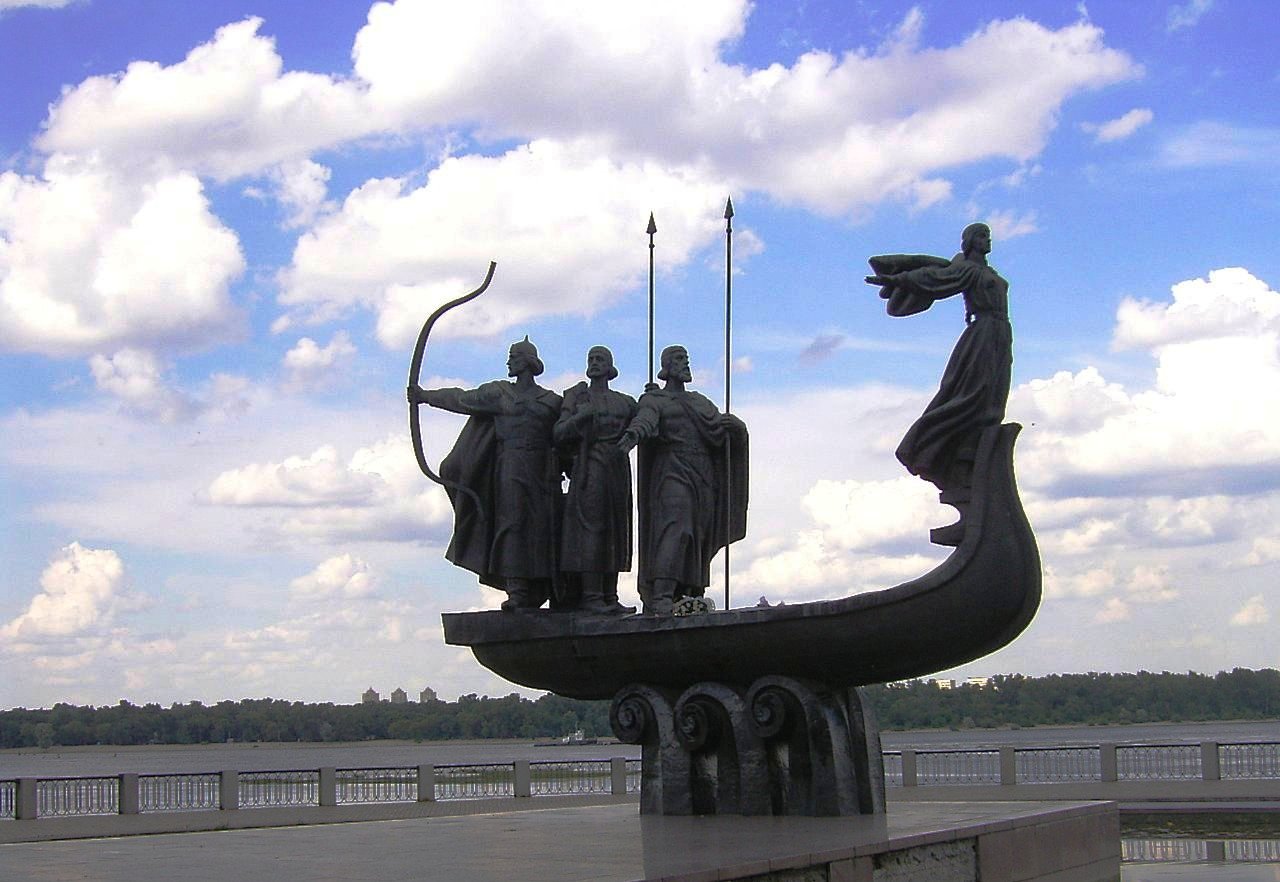
The Founders of Kiev
To get cooling breezes and fresh air the nobility built their homes on the hill tops, leaving the more humid atmosphere of the river-side to the less well-to-do artisans. It is quite a climb from the Lower City (Podil) to the top of Volodymyrska Hill but luckily Irene relented, and for the cost of approximately 10p, we took the 3-minute funicular ride. The view as we stood beneath the massive monument to Prince Voldymyr looking out over the broad sweep of the Dnieper river busy with pleasure craft and working barges to the sandy beaches of Trukhaniv Island would have even been worth the walk up the hill.
Podil, was, and still is today, very much a commercial district but one certainly worth exploring, especially the area surrounding Contract Square. To hold the vast trade fairs the Contract House was built in 1817 and through its doors came the celebrities of the age to sing, perform or visit. Apart from the district’s churches, architecture and monuments there are also a number of museums to see, including the sombre and harrowing National Museum of Chernobyl that commemorates the world’s worst nuclear accident in April 1986.
It is not only the funicular that leads down into Podil, so to does Andriyivsky Uzviz, also known as Andrews Hill. The steep, cobbled street, said to be the oldest in Kyiv, is arguably the best place for souvenirs. But be warned many of them are imported from Russia. Nevertheless it is a fun place with many bars, restaurants and galleries flanking the street’s craft and souvenir stalls. Half way down the street Irene spotted one of her favourite restaurants The Two Hares. The temptation was too great and seduced by the idea of Chicken Kiev we indulged. It has to be said that apart from our own self-catering we had eaten very well and very reasonably in the city (visitors can choose from a wide range of restaurants catering to all tastes and pockets) but the meal at The Two Hares was excellent. We declined the cigarette and cigar menus choosing instead a selection of Russian starters, Chicken Kiev and a sour cherry dessert. Considering the quality of the service and atmosphere, a couple of glasses of vodka each and two glasses of red wine we thought that £38 (including a tip) for the two of us was pretty reasonable.

The famous Chicken Kiev
Something else that I was longing to try was Kras-Krac. I had read about this drink made from fermented bread but had not seen it for sale anywhere. We found it at the Pecherska Lavra. This nine-century old complex of churches on top of one of the city hills is just amazing but it is chiefly famous for its catacombs containing the remains of five monks. A hot, busy Sunday afternoon was possibly not the best time to visit the catacombs and certainly not suitable for anybody suffering from claustrophobia as it is quite impossible to turn round and get out once caught up in the crush of visitors. Admission is free but you have to buy a candle – you need one anyway to see as you inch your way along the unlit, low, narrow and cramped passageways. So the sight of a Kras-Krac wagon as we emerged 20 minutes or so later into sunlight was especially welcome. The sweetish yeasty, non-alcoholic, brew might not be to everybody’s taste but at 12p for a .3ltr beaker it is worth trying – and actually I liked it.
Kiev is a great city to visit, very compact and most places can easily be reached on foot. If there is a problem it is that signs are chiefly in the Cyrillic script. Irene worked hard at teaching me some of the basic letters and it didn’t take too long before I began to work out some of the words. If you don’t have a translator as your guide, it is worth searching the internet before leaving the UK or buying a phrasebook containing the Cyrillic alphabet. Taxi fares can be expensive so negotiate a fare before getting in. Probably easier than travelling by bus is to take the Metro: there are only three lines with a number of interchange stops. Buy a token for the turnstyle and marvel at the experience of descending deep underground. At a depth of 107m the Arsenal station is the world’s deepest whilst Universytet has, at 87m, one of the longest escalators. Kiev’s international airport is located about a half-hour taxi ride from the city centre.

Kiev Metro
A week wasn’t long enough. We hadn’t been able to get to the National Opera House, there were lots of museums and churches to visit, I hadn’t walked round through the Mariyinsky Palace grounds and neither was there time to explore the Botanical Gardens, said to be beautiful in May when the lilac and chestnut trees are in bloom. One visitor to the city, Honore de Balzac, is reputed to have said “After I visited Catholic Rome I conceived a desire to see Orthodox Rome, Petersburg is a young city, Moscow is just middle-aged, but Kyiv is the Eternal city of the North”. He had a point and he would be so pleased to know that not only is it being restored to its former glory but should also have a golden future.
You may also like to read
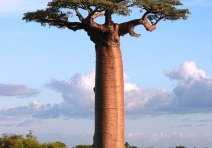
MADAGASCAR - THE MAGIC
Tour-smart takes us to the fourth largest island in the world that lies 400 kilometres off the east coast of Africa.
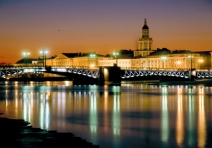
RUSSIA - ST.PETERSBURG
Tour-smart gives you a small insight to magnetic St. Petersburg. A relatively “young” city, it\'s mystery is enhanced by exciting stories, myths and legends.

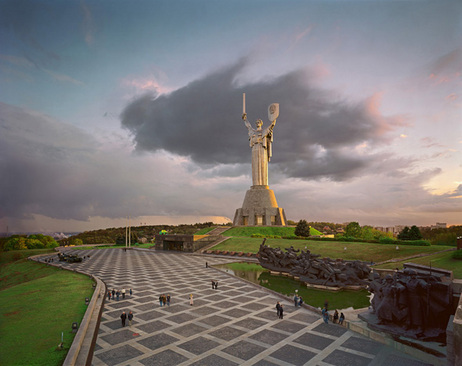
Comments